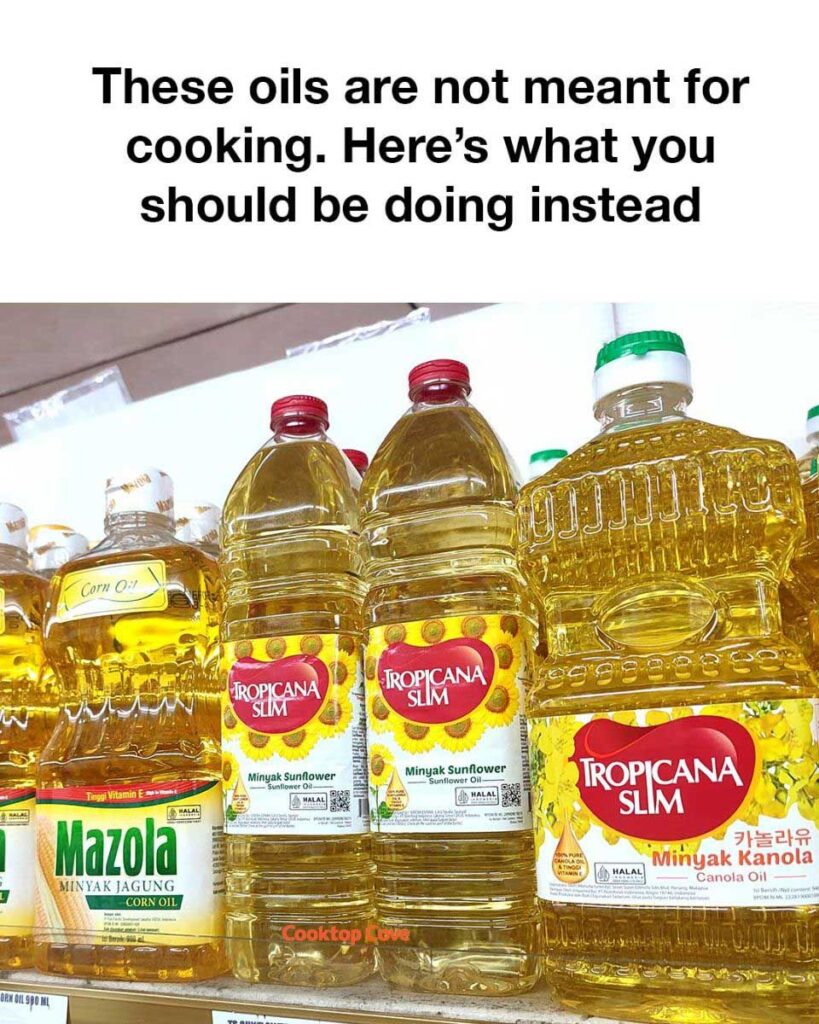Cooking oils are a staple in kitchens around the world, used for frying, sautéing, baking, and even as salad dressings. Each type of oil has its own unique properties, including flavor, nutritional content, and smoke point, which is the temperature at which the oil begins to smoke and break down. Choosing the right oil for cooking is crucial not only for the flavor of your dishes but also for your health. Some oils are better suited for high-heat cooking, while others are best used raw or at lower temperatures.
Understanding the Risks of Cooking with Certain Oils
Not all oils are created equal, especially when it comes to cooking. Some oils can release harmful compounds when heated beyond their smoke point, potentially posing health risks. Additionally, oils high in polyunsaturated fats can oxidize when heated, leading to the formation of free radicals, which are linked to various health issues. Understanding these risks can help you make better choices in the kitchen and avoid potential health hazards associated with cooking oils.
1. Canola Oil: Why It Shouldn’t Be Used for Cooking
Canola oil is often marketed as a heart-healthy option due to its low saturated fat content. However, it is high in polyunsaturated fats, which can become unstable at high temperatures. When heated, canola oil can oxidize and produce harmful compounds like aldehydes, which are associated with inflammation and other health problems. It’s better to use canola oil in cold applications, such as salad dressings, to avoid these risks.
2. Sunflower Oil: The Reasons to Avoid Cooking with It
Sunflower oil is another common cooking oil that is high in polyunsaturated fats. While it has a relatively high smoke point, making it seem suitable for frying, the high omega-6 fatty acid content can lead to an imbalance in the omega-3 to omega-6 ratio in the diet. This imbalance is linked to inflammation and chronic diseases. Therefore, it’s advisable to limit the use of sunflower oil for cooking and opt for oils with a better fatty acid profile.
3. Corn Oil: Potential Hazards When Used in Cooking
Corn oil is widely used for frying and baking due to its neutral flavor and affordability. However, like sunflower oil, corn oil is high in omega-6 fatty acids and can contribute to an unhealthy fatty acid balance. Additionally, corn oil is often highly processed, which can strip away beneficial nutrients and introduce harmful trans fats. It’s best to avoid using corn oil for cooking and choose less processed oils with a healthier fat composition.
4. Vegetable Oil: Why It’s Not Suitable for Cooking
Vegetable oil is a generic term that often refers to a blend of different oils, such as soybean, corn, and canola. These oils are typically high in polyunsaturated fats and can be highly processed, leading to the formation of trans fats. The instability of these oils at high temperatures makes them unsuitable for cooking, as they can degrade and release toxic compounds. Opting for oils with a higher smoke point and more stable fat composition is a healthier choice.
Healthier Alternatives for Cooking
Next Page
Healthier Alternatives for Cooking
When it comes to cooking, choosing oils with a high smoke point and stable fat composition is key to maintaining both flavor and health. Oils rich in monounsaturated fats, such as olive oil, avocado oil, and coconut oil, are excellent alternatives. These oils not only withstand higher cooking temperatures but also offer additional health benefits, such as improved heart health and anti-inflammatory properties.
The Benefits of Using Olive Oil for Cooking
Olive oil, particularly extra virgin olive oil, is renowned for its health benefits and versatility in the kitchen. Rich in monounsaturated fats and antioxidants, olive oil can help reduce inflammation and lower the risk of chronic diseases. While extra virgin olive oil has a lower smoke point, it is still suitable for low to medium-heat cooking. Its robust flavor also enhances salads, dips, and marinades.
Coconut Oil: A Safe and Nutritious Option
Coconut oil is a popular choice for cooking due to its high smoke point and stability at high temperatures. It is rich in medium-chain triglycerides (MCTs), which are easily metabolized by the body for energy. Coconut oil has a unique flavor that complements both sweet and savory dishes, making it a versatile addition to your pantry. Its antimicrobial properties also contribute to overall health.
Avocado Oil: High Smoke Point and Nutritional Advantages
Avocado oil is an excellent choice for high-heat cooking, thanks to its high smoke point and rich content of monounsaturated fats. It is also packed with vitamins and antioxidants, such as vitamin E and lutein, which support eye health and reduce inflammation. Avocado oil’s mild flavor makes it suitable for a wide range of culinary applications, from frying to drizzling over salads.
Conclusion: Making Informed Choices for Healthier Cooking
Choosing the right oil for cooking is essential for both flavor and health. By understanding the properties and risks associated with different oils, you can make informed decisions that enhance your culinary creations and support your well-being. Opt for oils with stable fats and high smoke points, such as olive oil, coconut oil, and avocado oil, to ensure a healthier cooking experience. By doing so, you not only improve the taste of your dishes but also contribute to a healthier lifestyle.

